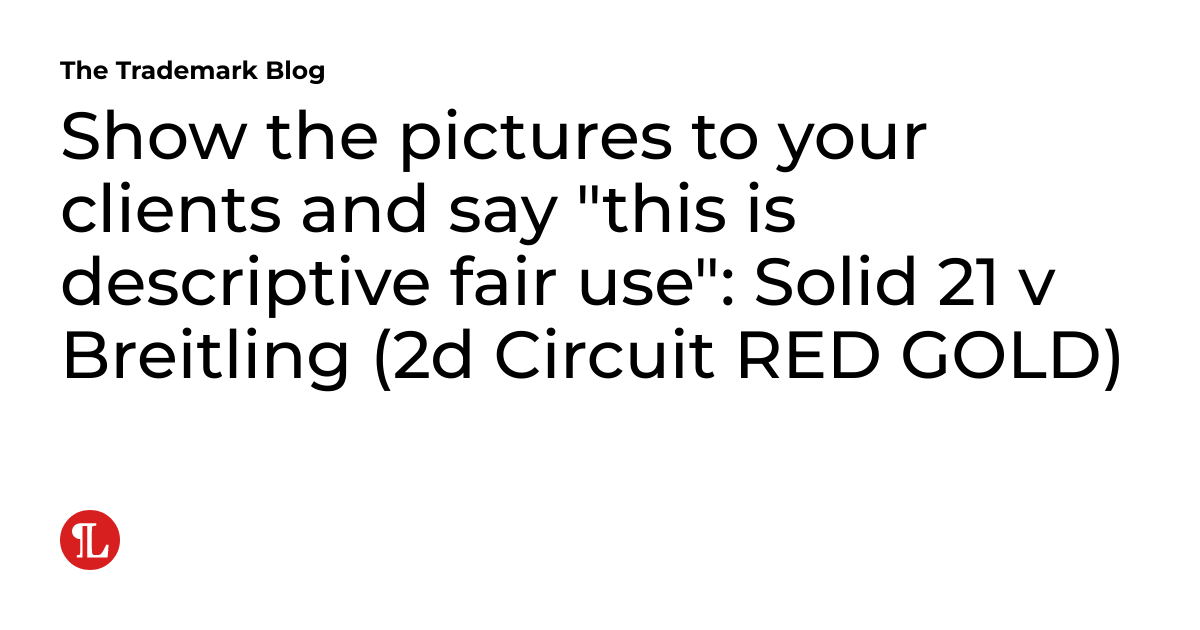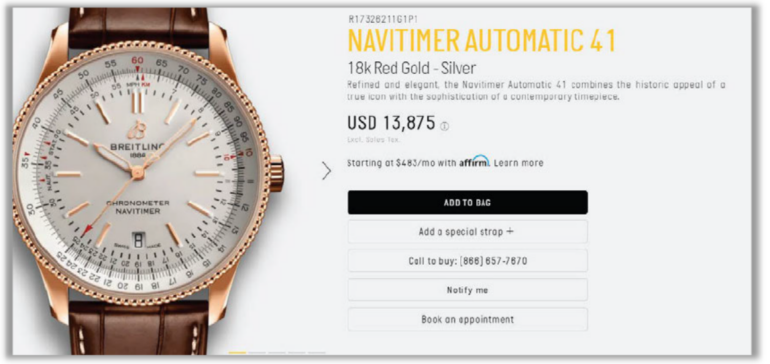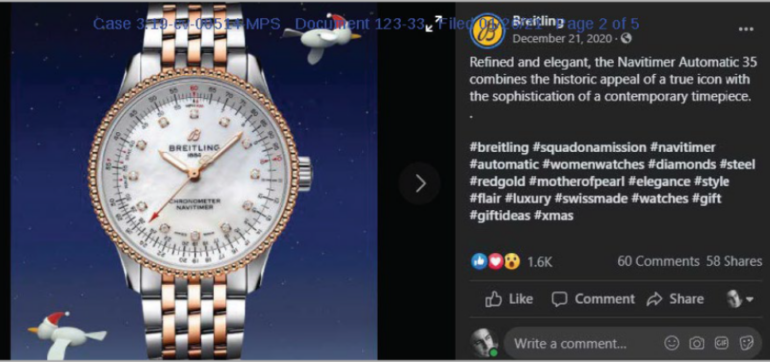

Plaintiff has been suing various wristwatch companies over the use of the term RED GOLD. Here, Breitling’s dismissal of plaintiff’s suit at summary judgment provides a road map as to how to make descriptive fair use of even an incontestable mark (and even when there were (allegedly) alternative descriptive terms available to defendant).
From the decision: “Left untouched, pure gold is yellow. With the addition of silver, gold takes on a whiter tone; copper creates a reddish or pinkish color . . . Throughout the
twentieth century, many newspapers, advertisements, magazines, textbooks, and
other reference materials used the term “red gold” to describe the gold-copper
combination. Though the term “rose gold” is commonly used today, references to
“red gold” continue; from 2001 to 2017, the Wristwatch Annual included more than
1,300 references to “red gold” by fifty-three different watchmakers.”
Plaintiff alleged that it has used the mark RED GOLD on watches since 1989. It filed to register the mark in 2001 and in 2009, RED GOLD® achieved incontestable status
Breitling began using the term in 2010 to describe the color of its watches, indicating, for example, that the watch was available in stainless steel and 18k Red Gold:

Breitling also used the hashtag #redgold as one of various hashtags (many of them also descriptive) in social media (see below).
Breitling argued that the term was generic (as it was barred from arguing that the term was descriptive, due to the registration’s incontestable status). Alternatively, it argued that it was making fair use of the term,
Held: Breitling satisfied the three prong test of descriptive fair use as (1) it did not make trademark use of the term; (2) it used the term solely to describe as aspect of the product; and (3 ) there was no evidence that it did not act in good faith.
Practice pointer: You can show the illustrations of Breitling’s use of the term in various promotional materials to clients and say “here, you can do this.”

The court notes that Breitling did not use the term to describe any product that is
not made from gold with a red/pink hue, The term was always accompanied by Breitling’s own trademarks. The term was used in smaller print, near other descriptive terms. Breitling’s “#redgold” tag was buried in a long list of other terms, most of which are descriptive.
The decision is also notable for clarifying an argument that never seems to disappear from fair use analysis. Plaintiff’s often argue that defendant’s use was not fair because it had descriptive alternatives (in this case, plaintiff alleged that Breitling could have used ROSE GOLD – which is disputed by Breitling because ROSE GOLD tends to refer to a lighter color than RED GOLD). Here, the circuit court noted that when a term is inherently descriptive, defendant descriptive use of the term is not evidence of bad faith without more, regardless of whether it could have used other terms (the dissent had a problem with this holding).
Text of Solid 21 v Breitling, 22-366 (2d Cir March 14, 2024).





